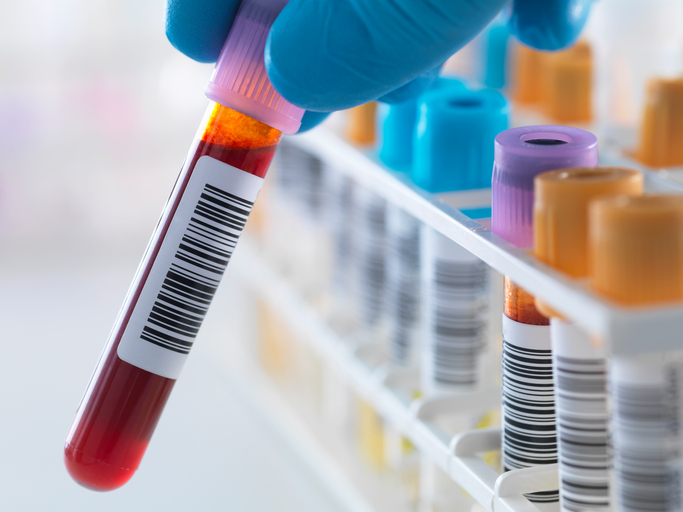
Four years ago, Sendhil Mullainathan, Ziad Obermeyer, Niyum Gandhi, and Elliott Green began their quest to solve what they believe is the true bottleneck of using AI in healthcare—real-world data.
“[Mullainathan and Obermeyer] had written a pivotal paper on AI and healthcare that focused on the inability of AI to solve healthcare problems without having exceptional data, or else you would have a lot of bias,” Elliott Green told Inside Precision Medicine. “For AI to truly be effective, we need to get as high-fidelity information as possible for what the machines can do.”
Together, the four co-founded Dandelion Health, a data repository that collects the high-quality, representative clinical data required to improve healthcare through clinical AI. Dandelion successfully convinced several health systems, such as Sharp Healthcare, Sanford Health, and Texas Health, to provide it with data for millions of patients.
“Lots of people say they have multimodal data, and they do because, according to the definition of multimodal, it just needs to be more than one,” said Green. “We’ve spent four years (and I have the lack of hair to prove it) building the pipes to get into health systems, to get all of this stuff out at scale. It’s petabytes of data.”
With all that data in hand, the company developed machine learning algorithms over the next few years to analyze various types of raw, unstructured clinical data, culminating in today’s announcement of the Clinical AI Marketplace—an objective AI algorithm that evaluates real-world data, layers it, and validates it.
Theoretically, Dandelion Health’s approach has applications worldwide, such as biopharma companies de-risking clinical trials, providers making clinical care decisions, and payers weighing reimbursement decisions.
Green said, “Outside of those [health systems], no one in this country has done what we have done at scale. I know that; every other health system [executive] also knows it. This fundamentally alters the nature of the game from the outset.”
But does it work?
Making label expansion more efficient
Green said about nine months ago, the team was struck by the amount of clinical testing required to get drugs like Humira approved for several indications.
“People say it takes years to run clinical trials before you get insights, but it is already happening,” said Green. “We have this arcane system where we need to go back to a clinical trial, arrange it, get the funding, and do all this stuff before we can get the right treatments to the right people. So, we thought… we can make a massive difference and really speed up and make [label expansion] more efficient.”
And then the lightbulb went off—what about GLP-1 receptor agonists? Given the high cardiovascular risk in patients with obesity and diabetes, the FDA has also issued guidance mandating cardiovascular outcomes trials for GLP-1 receptor agonists like semaglutide and other antiglycemic drugs for patients at increased risk of adverse cardiovascular outcomes.
First, Dandelion Health extracted multimodal real-world patient data from their repository, similar to the SELECT (Semaglutide Effects on Heart Disease and Stroke in Patients With Overweight or Obesity) clinical trial run by Novo Nordisk. They used this to run an observational clinical trial to determine whether an AI-generated biomarker based on electrocardiograms (ECGs) can accurately predict the risk of major adverse cardiac events (MACE) and then used the validated algorithm to understand the benefits of GLP-1 receptor agonists better.
Green said, “At the time, we found this algorithm we liked, and it predicted major adverse cardiac events from an ECG, which is insane if you think about it. You look at an ECG, and you can honestly tell me my risk profile of developing a major adverse cardiac event. Why don’t we validate that?’”
Using this biomarker, the Dandelion team found that using GLP-1 receptor agonists changes the risk of MACE over time by looking at the predicted MACE risk scores of patients with obesity without severe cardiovascular disease who used GLP-1 receptor agonists and similar patients who did not use them.
“Novo [Nordisk] spent goodness knows how much money on 17,604 patients to go through SELECT over five years,” said Green.
However, while Dandelion Health did a similar experiment without having to plan, fund, and carry out their own clinical trial, the primary differentiator is that Novo Nordisk is the manufacturer of semaglutide-based medications Wegovy and Ozempic—they’re the ones who will cash in, not Green and Dandelion Health.
Lighting up the data neighborhood
There are many other iterations of this that Dandelion could take on in partnership with drug developers and solving other healthcare problems. For example, how many times a day throughout the U.S. does a clinician in an emergency or urgent care department walk up to a door or screen, pull the file of a patient they’ve never met, and diagnose and treat them?
“Human physicians will look at emphysema on a chest CT and will be 50/50 split as to whether or not they get it right,” said Green. “Where’s the AI algorithm that has gone through all of the MRIs, the CTs, and everything, not just the notes in the summary, giving you the best quality diagnostic or understanding? Who’s actually building the algorithms that are going into an MRI or a chest CT, saying, ‘That really is emphysema,’ and they know it’s emphysema because we’ve trained this algorithm on this huge array of patient populations and are confident that we know what we’re talking about? That requires data.”
Green believes that with all the data and algorithms that make up the Clinical AI Marketplace, Dandelion Health can build models to find novel biomarkers, develop more informative study endpoints, and streamline drug development. Indeed, they have their work cut out for them.
“This is a proof of concept,” Green said. “We’re not trying to pretend we’ve solved [everything]. It’s going to take a while.”
Similarly, Green admits that not every case will work as well as their GLP-1 receptor agonist label expansion study.
“Not every case will show you there’s 100 million people that probably have cardioprotective benefits that we’ve never studied,” said Green. “But what it does is start to give that proof of concept. It starts to give us the idea of hypertension and heart failure and how many of those medications out there actually could be good for both but have only ever been trialed for one. How many other medications are already out there?”
Indeed, substantive off-label usage exists in this country and across the world. Green believes that the problem is that many people don’t have the confidence to look into those patient populations and decide to run the trial. Their data and AI provide a way to change that.
Green said, “The analogy I like about a randomized clinical trial is under a single street lamp, but once you power it with AI, it’s like you’re going to light up the whole neighborhood. Who knows what you’re going to find?”










